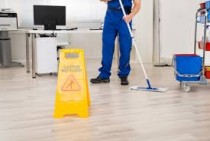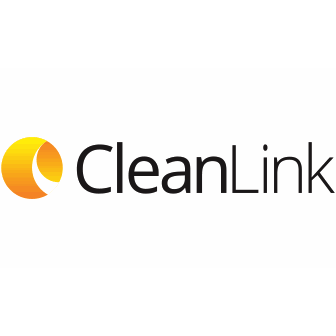 The concept of cleaning for health — rather than for appearance only — has gained momentum over the years. Facility executives now have a better understanding of how cleaning can affect the building’s occupants, and consumers are becoming more savvy on the subject thanks to the media.
The concept of cleaning for health — rather than for appearance only — has gained momentum over the years. Facility executives now have a better understanding of how cleaning can affect the building’s occupants, and consumers are becoming more savvy on the subject thanks to the media.
Cleaning with an eye on health helps reduce “sick building syndrome,” infections and respiratory problems — and it benefits not only the building’s occupants, but also the cleaning employees, since cleaner and healthier workplaces tend to experience less absenteeism among workers.
Though cleaning for health is important in any type of facility, it’s key in places such as hospitals (where patients may have compromised immune systems) and schools (since asthma is the third-ranking cause of hospitalization among those younger than 15 years of age). To address the issue, Housekeeping Solutions spoke with experts who outline details on how to implement an effective cleaning program that promotes the health of building occupants and cleaning workers.
The concept of cleaning for health — rather than for appearance only — has gained momentum over the years. Facility executives now have a better understanding of how cleaning can affect the building’s occupants, and consumers are becoming more savvy on the subject thanks to the media.
Cleaning with an eye on health helps reduce “sick building syndrome,” infections and respiratory problems — and it benefits not only the building’s occupants, but also the cleaning employees, since cleaner and healthier workplaces tend to experience less absenteeism among workers.
Though cleaning for health is important in any type of facility, it’s key in places such as hospitals (where patients may have compromised immune systems) and schools (since asthma is the third-ranking cause of hospitalization among those younger than 15 years of age). To address the issue, Housekeeping Solutions spoke with experts who outline details on how to implement an effective cleaning program that promotes the health of building occupants and cleaning workers.
Microfiber Miracle
The method for cleaning floors has certainly changed over the years. Before cross-contamination was an issue, cleaners would use string mops and a bucket of water and cleaning chemicals — dipping repeatedly until the floor looked clean. Little did they know that every time the mop hit that water, there was potential for the spread of dirt and bacteria.
These days, however, cleaners have choices when it comes to cleaning for health. Ergonomic cotton mops used in conjunction with advanced bucket systems can prevent cross-contamination. And microfiber mops have proven to be an asset to any cleaning arsenal because of its ability to pick up dirt and dust better than other fabrics.
According to Bennett, cleaners used to use one mop bucket for three rooms. Now, they can use one pre-saturated microfiber mop head for each room, which reduces the risk of transferring bacteria and viruses from one room to another.
Not all microfiber cloth is created equal, though. “You want at least a 1.0 denier [a unit of measurement for the linear mass density of fibers], which is a finer grade of microfiber and will collect more soil — because with the soil go the pathogens,” says Hicks. Many departments shop by price, but microfiber is one area where sometimes you get what you pay for.
Color Me Healthy
Another way to help reduce cross-contamination is to color code cleaning equipment so that certain tools are used only for certain tasks. In other words, that rag that was used on the toilet won’t make its way to the sink taps, desktop or phone.
“There is also value to color coding when dealing with English-challenged employees,” says Hicks. “It can be a quick visual: If someone is using a cloth of the wrong color, it raises some immediate questions and concerns.”
Experts recommend creating a system that suits the facility’s needs and is easily understood by cleaners. Cleaning managers can also use a standard coding system: red for high-risk cleaning such as toilets; yellow for restroom surfaces plus counters, sinks and mirrors; blue for low-risk areas like windows, dusting and desks; and green for food service areas.
One important step towards green cleaning is to choose green certified products. “We recommend looking at third party certifications to make sure the products meeting their claims,” says Claris Olson, environmental health specialist at the Healthy Schools Campaign. Green Seal and Environmental Choice are two certifying bodies that look at both environmental and performance standards when certifying products.
In addition to third-party certifications, experts recommend examining the cleaning needs within your facility, as well as health requirements necessary for cleaning workers and building occupants.
A Green Clean
Cleaning for health often means to clean with the goal of reducing the impact that cleaning has on building occupants and helps reduce the spread of bacteria. Green cleaning takes that one step further by reducing the impact that cleaning has on the environment.
Many cleaning managers feel that one is synonymous with the other and, therefore, incorporate cleaning programs that satisfy both requirements. According to Bennett, for instance, Mercy Hospital’s cleaning department — although already focusing on cleaning for health — hopes to go green within a year. Hicks agrees.
“We’re finding more people with chemical sensitivities and we even have some patients who ask us to clean only with water,” says Hicks, who is also director of environmental services at St. Luke’s Hospital in Chesterfield, Mo. “Our goal of ‘first, do no harm’ is that we don’t harm the building occupants, but at the same time we eliminate the pathogens that cause illnesses.”
Training
Cleaning managers can spend their entire budget on microfiber, color code until they see red, and choose the greenest of the green cleaning products — but if employees aren’t trained properly, the building won’t be any more healthful for its occupants.
At Mercy Hospital, Bennett takes training seriously. Employees have three days of intensive training and then a month of mentoring before they’re even allowed out on the floor on their own.
“We have fewer people getting injured and the hospital is cleaner,” says Bennett. “It was dirty when I got here — we’re talking dust kitties in the rooms.” Bennett’s employees also get an orientation of the department, where they’re cross-trained to understand everything from floor care to how to use a Tuberculosis mask.
If you switch to greener cleaning tools or products (or even to different conventional tools or products), O’Brien suggests asking the vendors to assist with training so all employees understand how to use the new cleaning supplies.
With more people realizing that their environment has an effect on their wellness, cleaning for health is a key issue for cleaning departments. Avoid cross-contamination, follow best practices to create a healthier clean and avoid toxic cleaning procedures — the building occupants (and employees) will thank you.






Comments on this entry are closed.